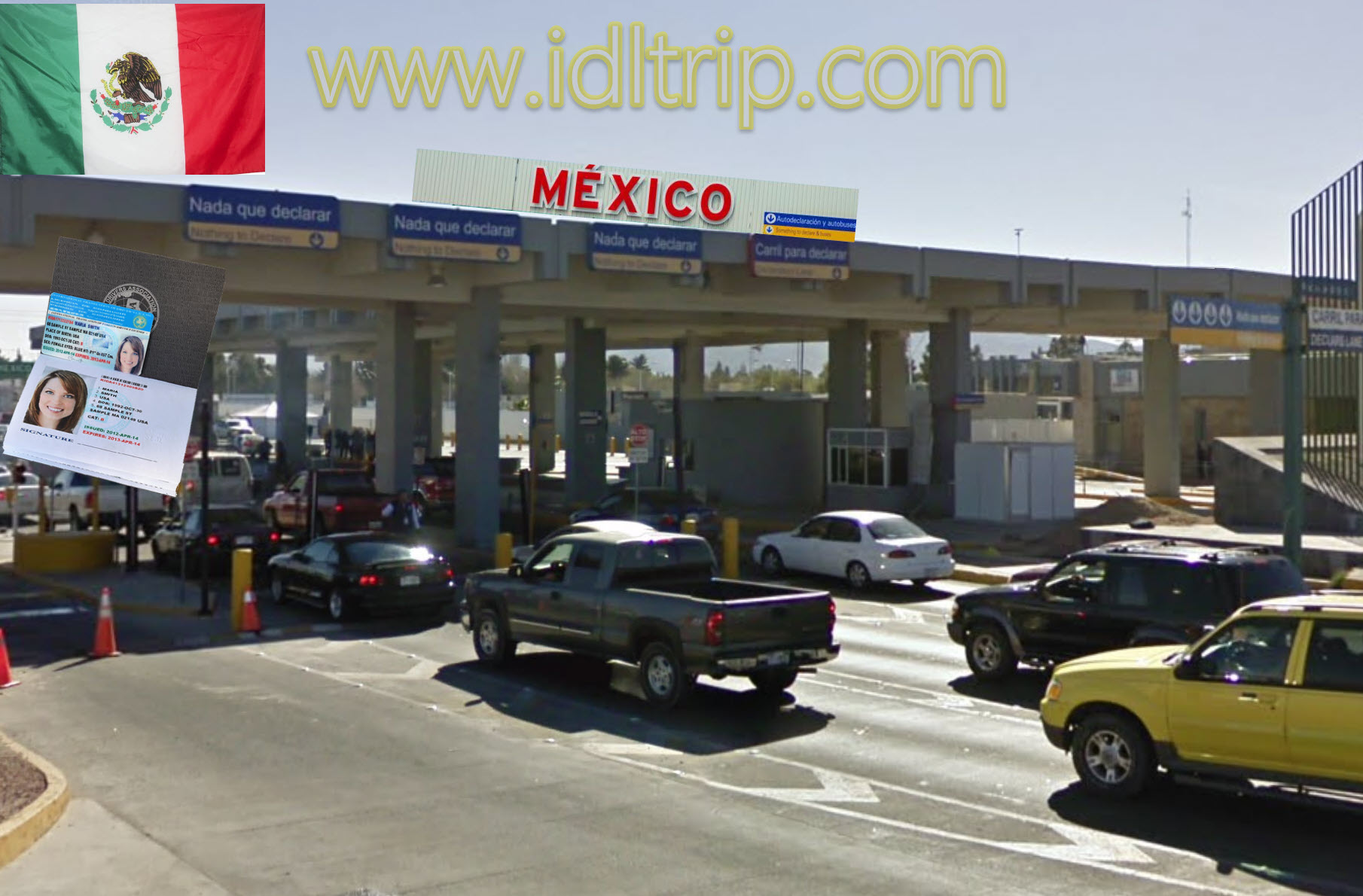Mexico- rules of the road. Checklist for Driving into Mexico.
Driving in Mexico
The country's laid-back attitude is evident in the citizens' casual driving habits and logical driving patterns. While the way Mexican drivers operate on the roads may seem a bit extreme to U.S. citizens, they make perfect sense once you've got the hang of them, and as a result, large cities like Mexico City are no worse than Phoenix or Atlanta, at rush hour.
Areas to avoid do exist, like the Toluca Highway—Carretera Nacional 134 in Guerrero, locally called carretera de la muerte (Highway of Death)—which is known for random encounters with Bandidos (bandits). However, you're more likely to get held up in downtown Detroit than on a Mexican back road, which isn't to say you shouldn't follow the same safety rules when driving in Mexico that you do when driving back home.
It's not worth taking risks and driving dangerously just because that's what the locals seem to be doing—they have far more experience than you do, and what looks like a danger to you may be well-rehearsed and safe for the locals.

Rules of the Road
We have to mention something about Israeli drivers.
If you've never driven in Mexico before, there are several rules of the road you need to be aware of to avoid accidents, emergencies, and getting stranded south of the border. While there are a number of rules that differ from driving laws in the United States, the top tips for safely driving in Mexico are:
- Avoid driving at night: Road fatalities are far higher at night in Mexico than by day, so avoid it if at all possible. There are a lot of animals (alive and dead), pedestrians, and plenty of vehicles without taillights on the road at night, which increases your risk of having an accident. Additionally, there are very few overhead lights on most Mexican roads, meaning you won't be able to see broken glass, potholes, or topes (frequent speed bumps).
- Don't panic if you break down at night: If you break down in a remote area at night, you'll most likely be stuck where you are until morning. To survive the night, simply wind up your windows, lock your doors, and try to sleep in your backseat until dawn. It's very rare that something will happen to you on the side of the road in most parts of the country.
- Wait for the Green Angels if you break down in the daytime: Los Angeles Verdes (The Green Angels) will come to your aide in a short time if you break down on a roadway in Mexico in the daytime. The Green Angels are a fleet of green trucks with government-paid bilingual crews cruising the roads every day carrying tools and spare parts, looking for motorists in trouble. They'll even go to an auto supply store to buy a part for you if necessary. If you need them, call the 24-hour toll-free number for the Green Angels at 078 or, in some states, 01-800-987-8224, or pull over to the side of the road and put your car's hood up. Angeles Verdes patrol 206 Mexican roads.
- Turn signals mean "you can pass:" Unlike in the United States, where turn signals are used to indicate the intention to turn, in Mexico, they are used to indicate that the driver behind you is clear to pass. However, they can also be used to indicate turns, so make sure you look out for intersections up ahead before deciding to take the invitation to pass when the driver in front of you turns on their signal.
- Drive on the shoulder to accommodate oncoming traffic: If you see an oncoming vehicle trying to pass another in your lane of the road, you're expected to drive on the shoulder while they pass. You can also pass cars on the right shoulder, but make sure to be quick about it as Mexican drivers use every inch of the road in order to keep traffic flowing.
- Don't drive under the influence: Ever. You don't want to make friends in a sweaty jail cell or accidentally kill someone or yourself, so driving while drunk or other the influence of other substances is simply not worth the risk. If you're intoxicated and need to get to a hotel, take a taxi and come back for your car the following day when you've sobered up.
- Do not try to bribe police officers: If you're pulled over and think you're being asked for a bribe, ask to be taken to the jefe (chief)—if the officer just wants money from you, he will probably back off at that request. It's also worth mentioning that you should never be the person who suggests paying a bribe, as this could land you in a lot of trouble. If you do try to bribe a cop, keep in mind that many Mexican policemen are honest, don't take bribes, and you may get in hot water for doing something that is technically illegal in the country.
In Case of Emergency: As of 2017, Mexico adopted 911 as their emergency number.

Checklist for Driving into Mexico
- Identification: American citizens driving a car into Mexico, will need identification such as a passport or passport card.
- Mexican Immigration Card: ALL foreign citizens traveling to Mexico for purposes of tourism or a short visit of less than 180 days must fill out an Official Entry Immigration Form (FMM) prior to their arrival to Mexico. You can save time by filling out the Immigration Form(s) online. All you need is your passport, address or name of the hotel where you are staying. Otherwise, you'll have to fill it out at the border.
- Temporary Vehicle Importation Permit: To drive your car into Mexico, outside the border area or free zone, you'll need a permit which you can get on arrival at the border. You will need several documents to acquire a Mexico vehicle permit including proof of car ownership, proof of American registration, an affidavit from any lien holders authorizing temporary importation, a valid American driver's license, and proof of citizenship (like a passport or passport card).
Driver's License in Mexico
To rent a car in Mexico, most car rental companies require a full driving licence held for a minimum of 2 years with no major endorsements.
If your domestic driver's license is not in English (Arabic, Japanese, Cyrillic etc), an International Driving Permit (IDP/IDL) or an official translation in English is required when you drive in Mexico.
lease note that an International Driving Permit (often referred to as an International Driver's License) does not replace the requirement for a regular driver's license. And you must carry your current overseas driver’s license, IDP or translation with you all the time when driving in Mexico.
Age Requirement
Minimum age to rent a car in Mexico is 21 years (age may vary by car rental company and car category). If you're 21-25, you are likely to have to pay a young driver fee. If you're 65 or older, you may have to pay a senior driver fee.
